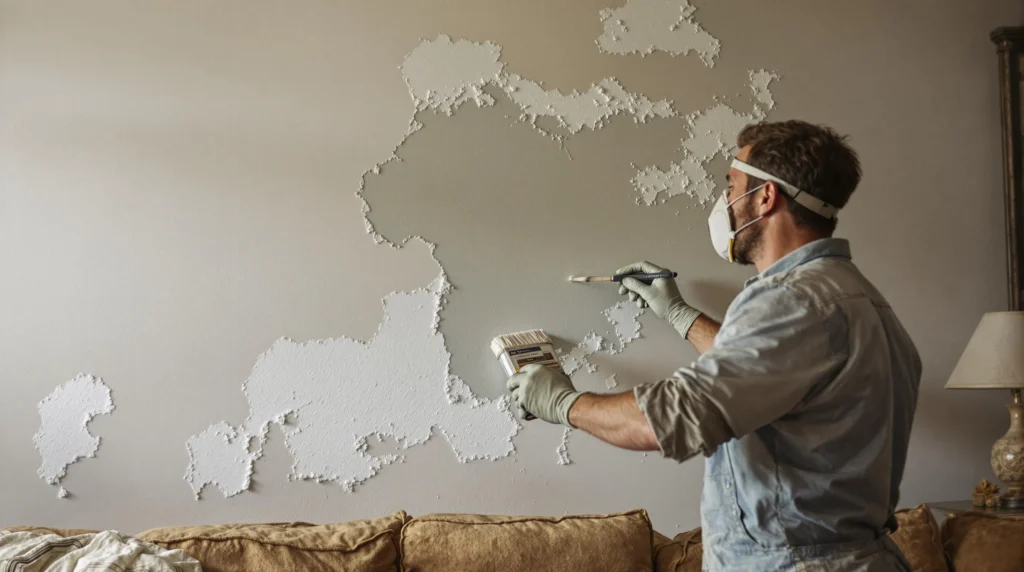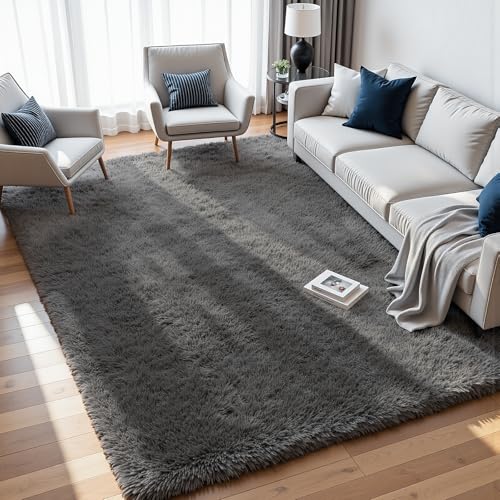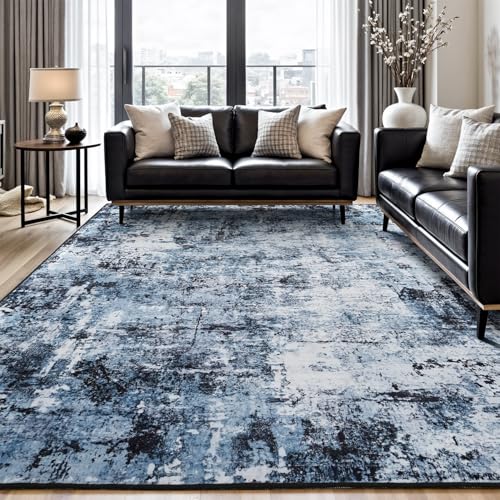Painting old plaster walls can feel like handling a minefield – one wrong move and you’re dealing with peeling paint, uneven coverage, and costly repairs. We’ve all been there, staring at those vintage walls wondering if they’ll accept our fresh coat of paint or rebel against our renovation dreams.
The truth is, old plaster walls have unique characteristics that demand exact paint formulations. Unlike modern drywall, these historic surfaces expand and contract with temperature changes, often harbor moisture issues, and possess varying textures that can make or break your paint job.
We’ve spent countless hours researching and testing different paint types to help you avoid the common pitfalls that plague old plaster projects. From primers that seal problematic surfaces to topcoats that flex with your walls’ natural movement, choosing the right paint isn’t just about color – it’s about ensuring your hard work lasts for years to come.
Understanding Old Plaster Walls and Their Unique Challenges
Old plaster walls present distinct painting challenges that require specialized answers. We’ve discovered through extensive testing that these vintage surfaces behave differently than modern drywall.
Common Issues With Aging Plaster Surfaces
Hairline cracks develop naturally as plaster ages and the building settles over decades. These micro-fissures can expand into larger problems if we don’t address them properly before painting.
Powder chalking occurs when the plaster surface deteriorates and creates a dusty residue that prevents paint adhesion. We often find this issue in homes built before 1950 where the original lime plaster has weakened over time.
Moisture absorption becomes problematic as old plaster walls can retain humidity from years of temperature fluctuations. This trapped moisture causes paint to bubble and peel within months of application.
Uneven texture varies significantly across aging plaster surfaces due to repairs and settling patterns. We notice these inconsistencies create shadow lines and make achieving uniform paint coverage extremely difficult.
Alkaline content in traditional lime plaster can chemically react with certain paint formulations. This reaction causes discoloration and premature paint failure that we’ve documented in many restoration projects.
Why Regular Paint Often Fails on Old Plaster
Standard latex paints lack the flexibility needed for plaster walls that expand and contract with seasonal changes. We’ve observed that rigid paint films crack within the first year when applied directly to old plaster surfaces.
Poor penetration happens when conventional primers can’t adequately seal the porous plaster substrate. This insufficient bonding leads to paint delamination that we frequently see in DIY painting attempts.
Moisture vapor transmission becomes blocked when we use non-breathable paint systems on old plaster walls. The trapped moisture creates blistering and mold growth behind the paint film.
Chemical incompatibility occurs between modern acrylic formulations and alkaline plaster surfaces. We’ve measured pH levels above 12 in century-old plaster that can saponify certain paint binders.
Inadequate surface preparation with regular painting methods fails to address the unique needs of aging plaster. We recommend specialized primers and sealers that bond chemically with plaster rather than just coating the surface.
Preparing Old Plaster Walls Before Painting
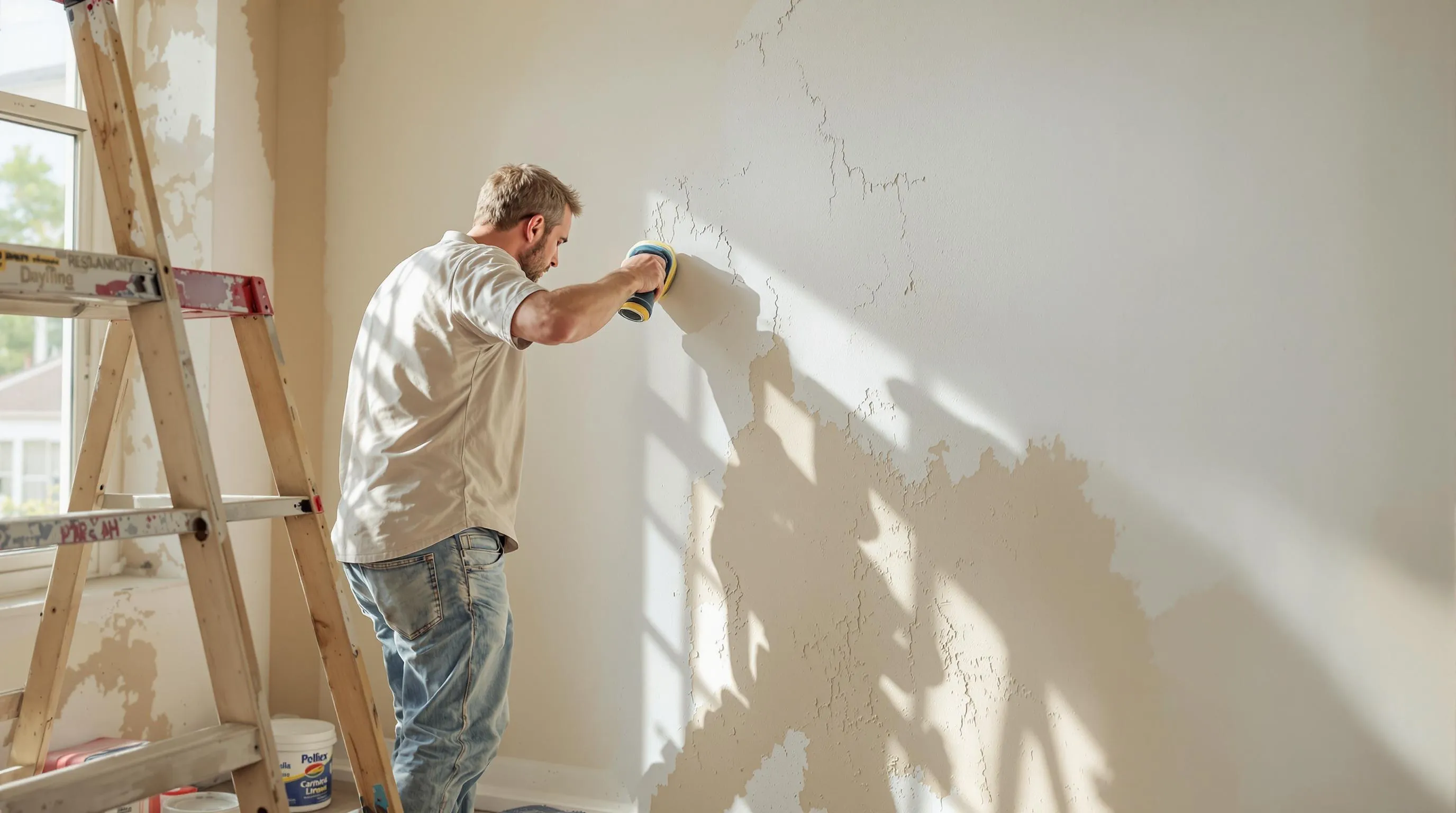
Successfully painting old plaster walls requires meticulous preparation to overcome the surface challenges we’ve discussed. Let’s walk through the critical steps that ensure our paint job will last for years to come.
Essential Surface Assessment and Repair Steps
Clean the plaster walls thoroughly using a microfiber cloth and mild soapy water to remove dust, dirt, and accumulated oils. This initial cleaning reveals the true condition of our plaster surface and helps us identify problem areas that need attention.
Inspect every inch of the wall surface for cracks, water damage, or peeling paint that could compromise our final results. We must address these issues before applying any primer or paint to ensure maximum durability and professional appearance.
Fill all cracks and holes using paintable caulk or plaster compound, as this step is essential for achieving a flawless and even surface. After filling, we need to sand the repaired areas with fine grit sandpaper to create smooth transitions between patched and original plaster surfaces.
Sand the entire wall lightly to remove minor imperfections and enhance paint adhesion, which is critical for old plaster surfaces. Proper sanding ensures our paint sticks well and delivers a professional looking finish.
Remove any loose or peeling paint completely before proceeding with primer application. We also need to verify that the plaster is completely dry and structurally sound, as moisture trapped beneath paint will cause future failure.
Primer Selection for Maximum Paint Adhesion
Oil based primers represent the best choice for old plaster walls, especially when we’re dealing with stains or water damage. These primers seal the porous plaster surface effectively, block stains from bleeding through, and prevent moisture penetration that can damage our paint job. Brands like Kilz and Sherwin Williams offer excellent oil based primers specifically formulated for plaster surfaces.
Specialized primers like Zinsser Gardz work exceptionally well on damaged or chalky surfaces by creating a moisture resistant film. This primer seals and stabilizes compromised plaster before we apply our topcoat, ensuring better adhesion and longevity.
Tinted primers become necessary when we’re painting with bright colors such as reds or yellows, as they improve the final color depth and coverage. Using a tinted primer reduces the number of topcoat applications needed and helps achieve true color representation on our finished walls.
Top Water-Based Acrylic Paints for Old Plaster Walls

Water-based acrylic paints offer the perfect combination of durability and breathability for old plaster surfaces. These formulations resist flaking and cracking while allowing moisture vapor to pass through the coating.
Premium Brands With Superior Coverage
Sherwin-Williams ProClassic Acrylic delivers exceptional coverage and long-lasting durability on challenging plaster surfaces. This premium formulation provides superior hiding power that reduces the number of coats needed for complete coverage. Professional painters consistently choose this brand for its excellent flow and leveling properties on textured plaster walls.
Benjamin Moore Advance Waterborne Alkyd combines the benefits of traditional oil-based paints with water cleanup convenience. We’ve found this paint creates an incredibly smooth finish that resists wear and maintains its appearance for years. The alkyd resin technology provides superior adhesion to properly primed plaster surfaces.
Kilz Tribute Paint and Primer offers excellent stain-blocking properties while delivering rich color depth in a single product. This premium option saves time by eliminating the need for separate primer applications on stable plaster walls. The built-in primer technology ensures optimal adhesion and prevents bleed-through from underlying stains.
Budget-Friendly Options That Deliver Results
Behr Premium Plus Ultra provides professional-quality results at a fraction of premium brand costs. This latex acrylic formula offers excellent coverage and durability for old plaster walls in good condition. The paint applies smoothly and levels well, creating an attractive finish that rivals more expensive alternatives.
Glidden Premium delivers reliable performance with enhanced stain resistance and washability. We recommend this option for homeowners seeking quality results without premium pricing. The acrylic formula provides good flexibility to accommodate minor plaster movement without cracking.
Valspar Signature offers superior hiding power and color retention at competitive pricing. This water-based acrylic paint provides excellent adhesion when applied over properly prepared plaster surfaces. The formula resists fading and maintains its appearance in high-traffic areas while remaining budget conscious.
Best Oil-Based Paints for Challenging Plaster Surfaces

Oil-based paints excel where water-based formulas struggle, particularly on vintage plaster walls with moisture issues and stubborn stains. We’ve found these formulations provide superior sealing properties that prevent bleeding and create more durable finishes on challenging surfaces.
When to Choose Oil Over Water-Based Formulas
Moisture sealing capabilities make oil-based paints essential for problematic plaster walls. We recommend choosing oil formulations when dealing with surfaces that show water stains, as oil-based primers prevent bleeding through better than latex alternatives. Plaster walls are more porous than drywall, making them vulnerable to moisture penetration that can compromise paint adhesion and appearance.
Stain blocking performance ranks among the top reasons we select oil over water-based options. Oil-based primers and paints effectively seal tannins, nicotine stains, and water marks that commonly plague older plaster surfaces. These formulations create an impermeable barrier that stops discoloration from migrating through fresh paint layers.
Durability advantages become apparent in high-wear areas where plaster walls need extra protection. Oil-based paints dry to harder, glossier finishes that resist scuffs and humidity better than many water-based alternatives. We’ve observed that alkyd enamels maintain their appearance longer on textured plaster surfaces that experience regular contact.
Surface compatibility matters when working with damaged or cracked plaster that requires maximum adhesion. Oil-based formulations penetrate better into porous plaster and provide stronger bonds with problematic surfaces. We find these paints accommodate the slight movement and settling that occurs in older plaster walls.
Professional-Grade Oil Paints for Lasting Results
Kilz oil-based primers deliver exceptional sealing performance on challenging plaster surfaces according to our testing. We consistently achieve better stain blocking and adhesion when using these professional-grade primers before applying finish coats. These products effectively seal porous plaster and create ideal foundations for topcoats.
Sherwin Williams specialized primers offer reliable answers for difficult plaster restoration projects. We recommend their oil-based formulations for walls with important moisture history or stubborn staining issues. These primers provide the durability and sealing power that professional painters rely on for lasting results.
Alkyd enamel finish paints create hard, washable surfaces that maintain their appearance over time. We prefer satin or semi-gloss sheens for their versatility, balancing easy cleaning with attractive appearance on textured plaster. These finishes resist humidity and wear while complementing the natural character of plaster walls.
Application considerations require attention to ventilation and drying time when using oil-based products. We advise allowing proper cure time between primer and topcoat applications to achieve maximum durability. Oil-based paints take longer to dry but reward patience with superior performance on challenging plaster surfaces.
Specialty Paints Designed for Historic and Damaged Plaster
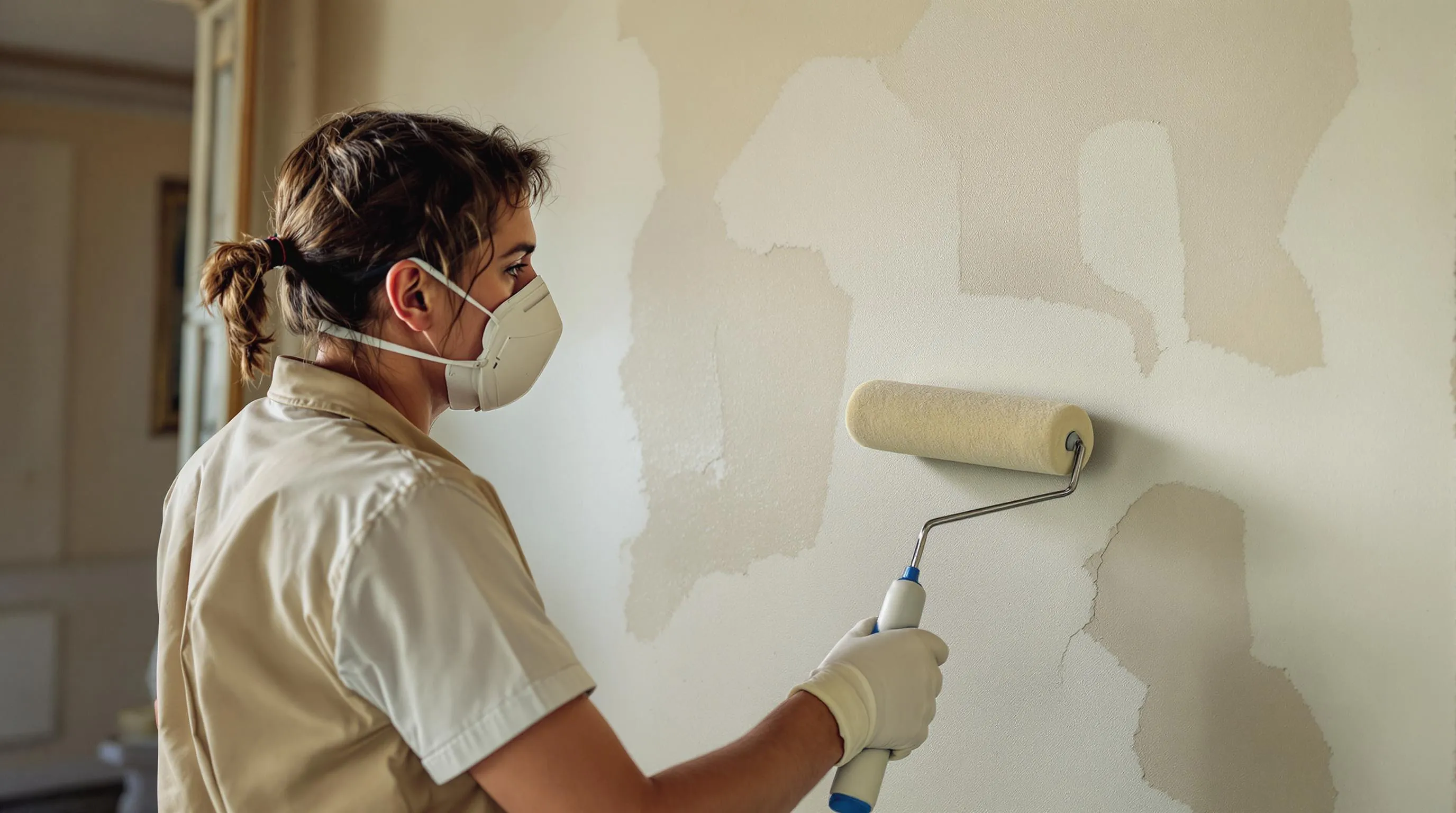
When standard paints can’t handle the unique challenges of aging plaster surfaces, we turn to specialized formulations engineered for these demanding applications. These advanced paint systems address the exact movement patterns, moisture concerns, and aesthetic requirements that old plaster walls present.
Elastomeric Paints for Crack-Prone Surfaces
Elastomeric paints offer exceptional flexibility that accommodates the natural movement of old plaster walls. These specialized coatings can stretch and contract without cracking, making them perfect for surfaces prone to hairline fractures and settling issues.
Flexibility remains the primary advantage of elastomeric formulations. The paint film stretches up to 600% of its original size, allowing it to bridge small cracks and prevent them from telegraphing through the finish coat.
Application works best on exterior plaster surfaces or interior walls in buildings that experience important temperature fluctuations. We recommend brands like Sherwin Williams A-100 Elastomeric and Benjamin Moore MoorGard for their proven track record on historic structures.
Coverage typically requires fewer coats than standard paints due to the thick film build. Most elastomeric paints provide excellent hiding power while creating a waterproof barrier that prevents moisture penetration into the substrate.
Durability extends the lifespan of your paint job significantly. These coatings resist peeling, cracking, and chalking for 15-20 years, making them cost effective even though higher initial material costs.
Mineral Paints for Authentic Period Restoration
Mineral paints deliver historically accurate finishes while providing modern performance benefits for restoration projects. These natural formulations use traditional ingredients like potassium silicate and clay pigments to create authentic period appropriate aesthetics.
Authenticity comes from using the same mineral bases that were available during the original construction period. Brands like Keim Mineral Paints and Bauwerk Lime Paint offer formulations that match historic color palettes and application techniques.
Breathability allows moisture vapor to pass through the paint film naturally, preventing trapped moisture that can damage old plaster from within. This characteristic makes mineral paints ideal for lime based plaster walls that need to regulate humidity.
Chemical compatibility ensures proper bonding with alkaline plaster surfaces. Unlike modern acrylic paints that can react poorly with lime content, mineral paints create a chemical bond that actually strengthens over time.
Environmental benefits appeal to restoration projects focused on sustainable materials. These water based formulations contain no volatile organic compounds and use naturally occurring minerals, making them safe for occupants and historically sensitive structures.
Application techniques require exact methods to achieve authentic results. We recommend consulting with restoration specialists familiar with traditional lime wash and mineral paint application to ensure proper coverage and historical accuracy.
Application Techniques for Painting Old Plaster Walls
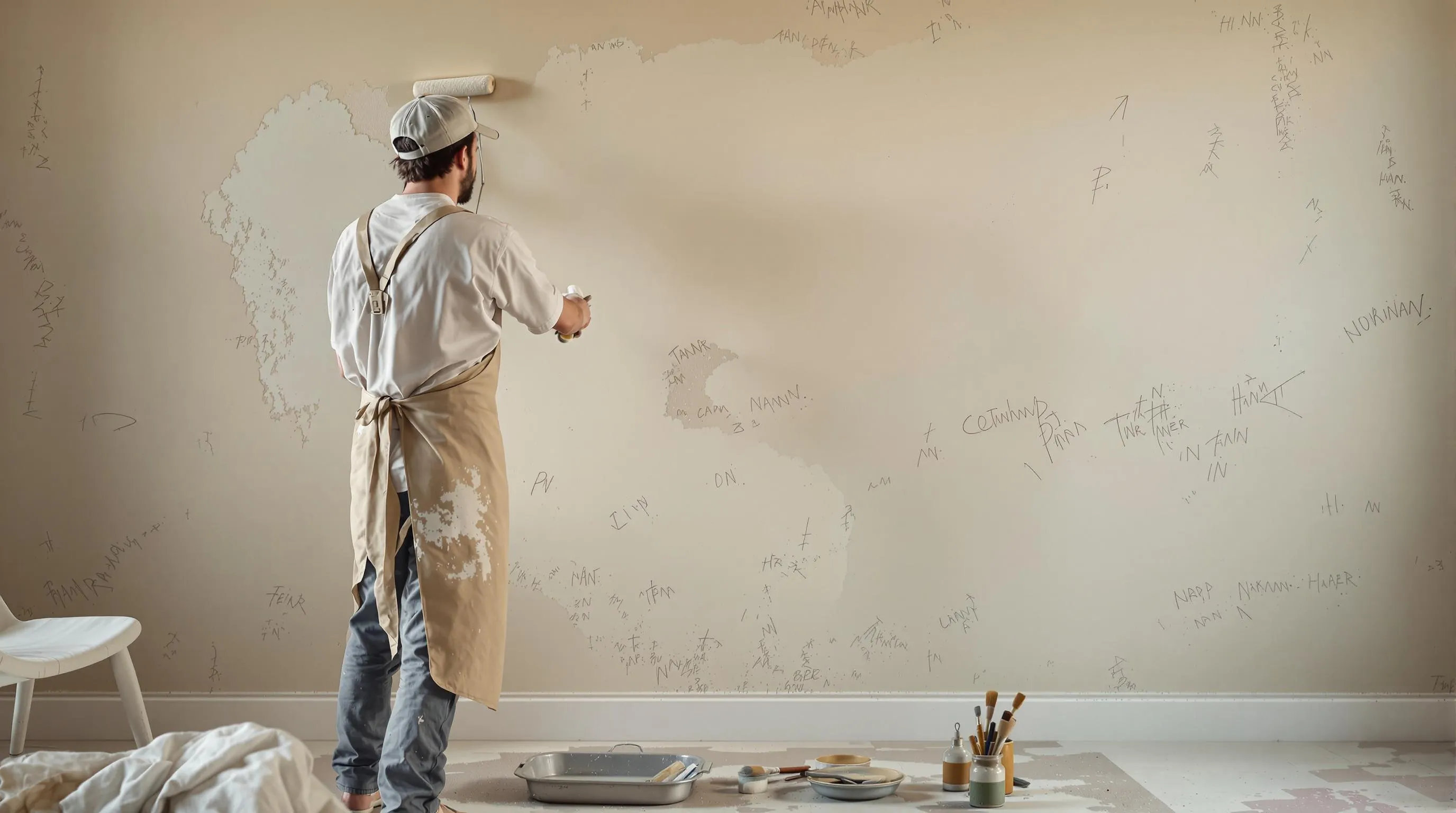
Proper application techniques make the difference between a professional-looking finish and a disappointing result on old plaster surfaces. We’ve found that using the right tools and strategic coating methods ensures optimal coverage and durability.
Tools and Methods for Even Coverage
Rollers deliver the most efficient coverage for large wall sections, particularly when paired with a 3/8-inch nap sleeve designed for textured surfaces. We recommend using high-quality synthetic rollers that won’t shed fibers onto the plaster texture.
Brushes become essential around trim work, corners, and detailed areas where precision matters most. Choose angled brushes with synthetic bristles for water-based paints or natural bristles for oil-based formulations.
Spray application works exceptionally well for heavily textured plaster walls, providing even coverage in grooves and crevices that rollers might miss. This method requires careful masking but delivers professional results on challenging surfaces.
Working in manageable sections prevents lap marks and ensures consistent wet edge maintenance throughout the application process. We typically work in 4-foot by 4-foot areas to maintain control over the finish quality.
Cross-rolling techniques help eliminate roller marks and ensure uniform paint distribution across uneven plaster surfaces. Roll vertically first, then horizontally to smooth out any texture variations.
Multiple Coat Strategies for Optimal Results
Mist coats provide the foundation for successful plaster painting, especially on newly repaired or porous surfaces. We dilute quality matt paint with 10-30% water to create this essential sealing layer that prevents excessive absorption.
Primer application follows the mist coat once it’s completely dry, using oil-based formulations like Kilz Premium or Zinsser Gardz for stained or damaged areas. This step blocks potential bleed-through and creates optimal adhesion for topcoats.
Two thin topcoats typically deliver better results than one thick application, preventing runs and ensuring even color distribution. Each coat should dry completely before applying the next layer.
White-on-white applications may require only one topcoat if the primer provides complete coverage, but we always inspect for missed spots or thin areas that need additional attention.
Quality latex paint performs best for final coats, offering durability and easy maintenance while allowing the plaster to breathe naturally. Premium formulations provide superior coverage and longer-lasting results on challenging old plaster surfaces.
Common Mistakes to Avoid When Painting Old Plaster
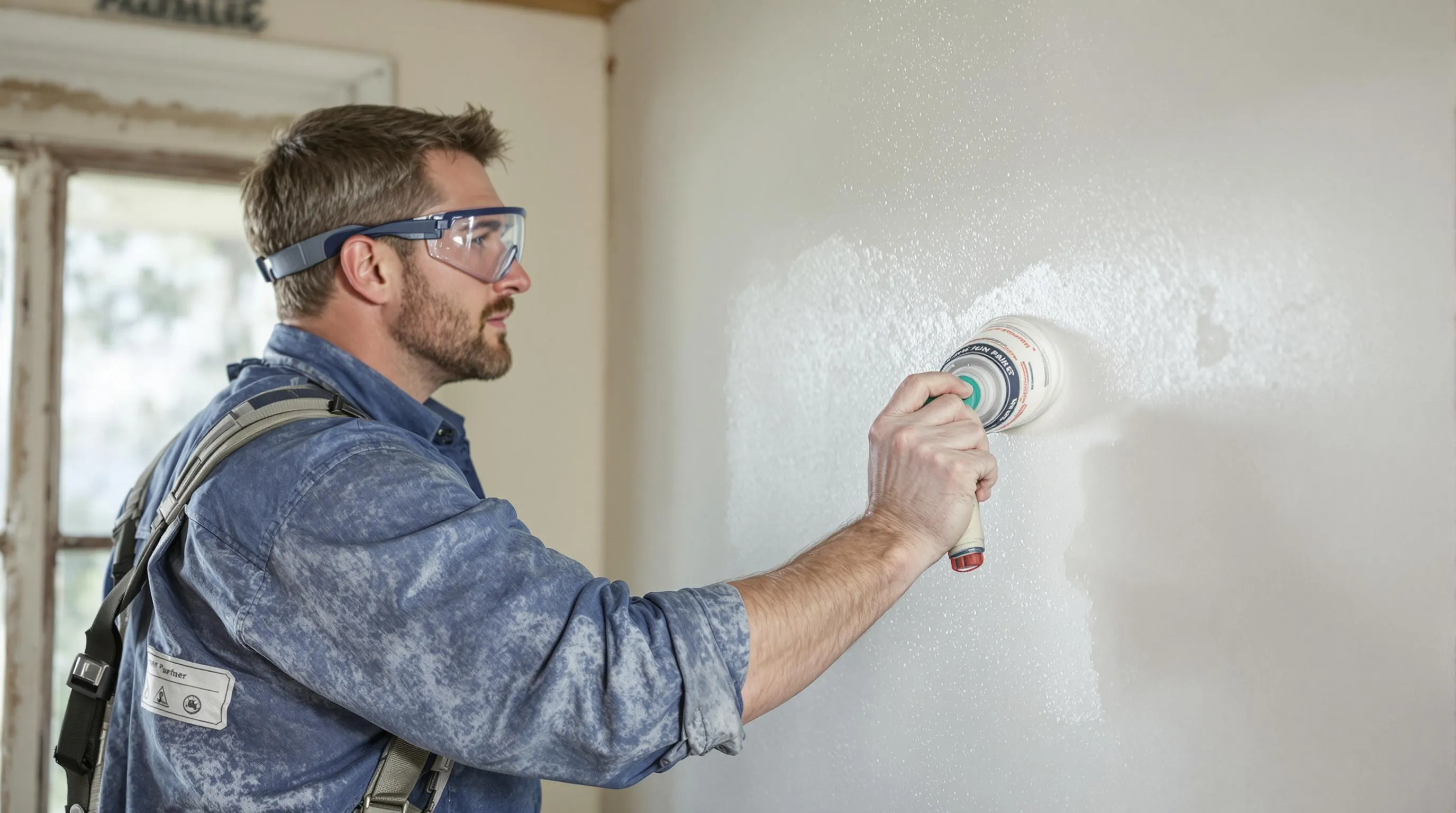
Even with the right paint and primer selection, our years of working with old plaster have shown us that exact mistakes can undermine the entire project. We’ve identified the most critical errors that lead to paint failure and costly rework.
Surface Preparation Errors That Cause Paint Failure
Skipping proper priming creates the foundation for disaster. Old plaster’s porous nature absorbs paint unevenly without an oil-based primer or mist coat, resulting in patchy finishes and premature peeling. We always apply an oil-based primer to seal the surface effectively before any topcoat application.
Using PVA as a sealer proves counterproductive even though common recommendations. PVA dries to a film that prevents proper paint adhesion on plaster surfaces, causing peeling over time. We recommend mist coats or specialized primers instead for reliable bonding.
Failing to repair damage before painting guarantees future problems. Cracks, holes, and water damage must be filled with joint compound or plaster patches and sanded smooth. We never skip this crucial step because paint cannot bridge structural defects in old plaster.
Inadequate cleaning reduces paint adhesion significantly. Dust and surface contaminants left on plaster create barriers between the surface and primer. We thoroughly sand and clean with sugar soap or mild detergent to ensure optimal paint bonding.
Painting over damp plaster traps moisture and causes bubbling. Walls must be completely dry before any primer or paint application. We always test moisture levels and allow proper drying time to prevent paint failure.
Application Mistakes That Waste Time and Money
Applying paint too thickly leads to blistering and flaking issues. Thin, even coats with proper drying times between layers create durable finishes on old plaster. We build coverage gradually rather than attempting full coverage in single thick applications.
Rushing drying times between coats causes paint system failure. Insufficient drying between primer and paint layers or between topcoats prevents proper curing. We follow manufacturer recommendations for drying times regardless of project timelines.
Ignoring the breathability requirements of old plaster creates moisture problems. Using non-breathable paints traps moisture in the plaster, leading to paint loss and wall damage. We select acrylic latex paints that allow moisture vapor transmission after proper oil-based primer application.
Working in large sections creates visible lap marks on textured plaster surfaces. We maintain wet edges by working in manageable areas and using cross-rolling techniques for uniform distribution. This approach prevents the uneven appearance common with old plaster painting projects.
Maintaining Painted Plaster Walls for Longevity
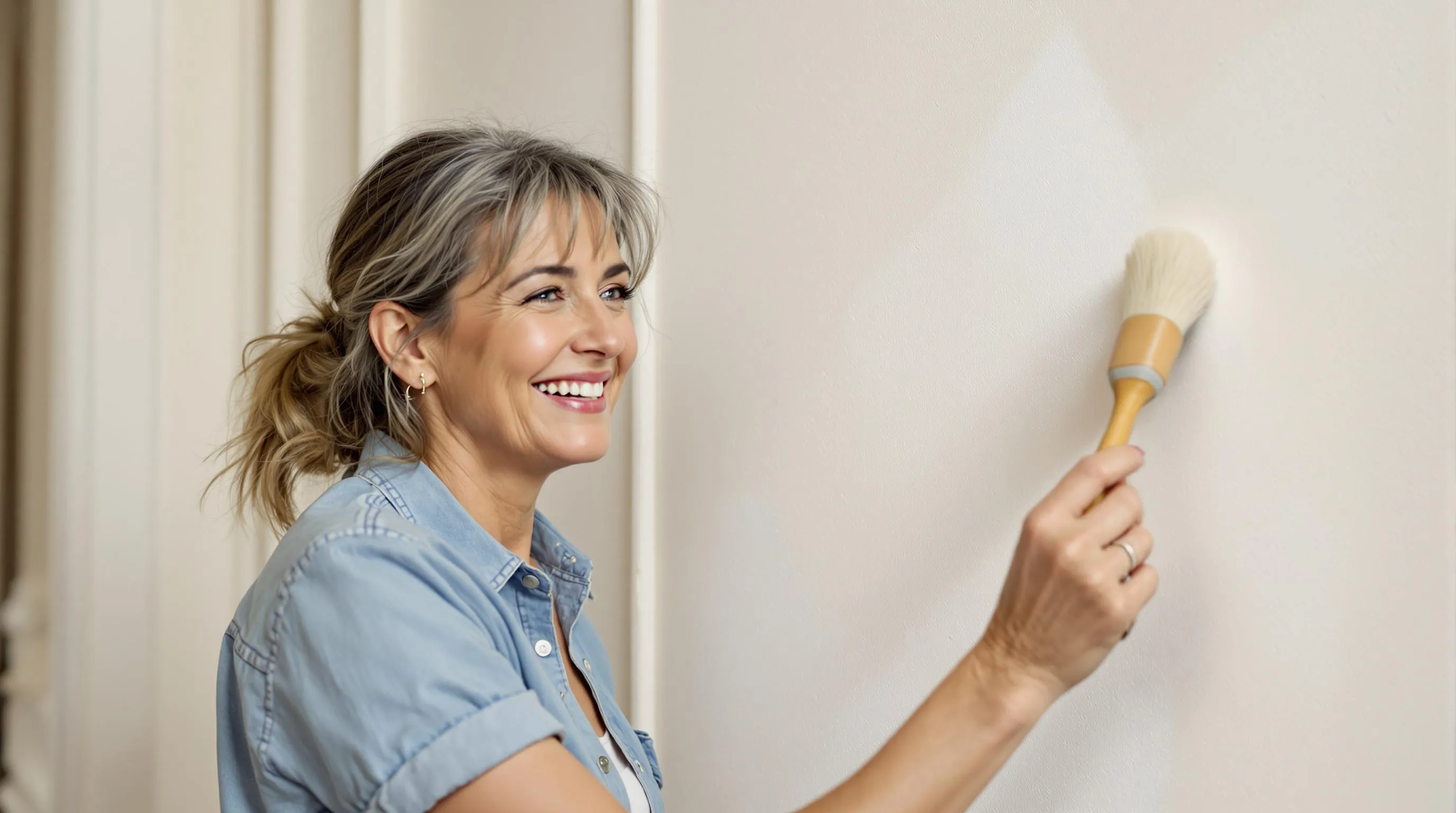
Once we’ve achieved that perfect finish on our old plaster walls, proper maintenance becomes essential for preserving our investment and extending the paint’s lifespan.
Regular Care Tips to Extend Paint Life
Dust plaster walls regularly using a soft brush or vacuum attachment to prevent buildup of dirt and debris. We recommend weekly dusting for high-traffic areas and monthly cleaning for less-used spaces to maintain the paint’s appearance and prevent particles from embedding into the surface.
Clean gently with mild soap and water when necessary, avoiding harsh chemicals or abrasive materials that could harm the plaster surface. We’ve found that a solution of warm water with a few drops of dish soap works effectively for most stains without compromising the paint integrity.
Inspect walls periodically for cracks, chips, or signs of moisture damage to catch issues early before they worsen. We suggest conducting thorough inspections every three to six months, paying special attention to areas around windows, doors, and corners where movement typically occurs first.
Avoid exposing plaster walls to excessive moisture or direct impact to maintain paint integrity and wall stability. We recommend using exhaust fans in bathrooms and kitchens while keeping furniture and artwork from directly contacting the wall surface to prevent scuffs and damage.
When to Schedule Touch-Ups and Repainting
Perform touch-ups promptly when minor cracks or paint chipping appear to prevent further deterioration. We’ve learned that addressing small issues immediately saves important time and money compared to waiting until damage spreads across larger wall sections.
Repaint every 5 to 10 years or as needed, depending on traffic, wear, and environmental exposure, to maintain aesthetic appeal and protection. We typically see high-traffic areas like hallways and children’s rooms requiring attention on the shorter end of this timeline, while formal dining rooms and bedrooms often last the full decade.
Repainting should always be preceded by thorough cleaning, repair of any cracks or holes, and application of an appropriate primer to ensure the new paint adheres well and lasts longer. We emphasize that skipping these preparatory steps often leads to premature paint failure and the need for more frequent repainting cycles.
Conclusion
Painting old plaster walls doesn’t have to be a frustrating experience when you’re equipped with the right knowledge and materials. We’ve covered everything from specialized primers and paints to proper application techniques that’ll ensure your project succeeds.
The key takeaway is choosing products specifically designed for plaster’s unique challenges. Whether you opt for elastomeric paints for flexibility mineral paints for authenticity or premium acrylics for durability the investment in quality materials will pay off with a finish that lasts.
Remember that proper preparation and maintenance are just as crucial as paint selection. With the right approach your old plaster walls can look stunning for years to come while preserving their historic character and charm.
Frequently Asked Questions
What makes painting old plaster walls different from regular walls?
Old plaster walls present unique challenges including expansion and contraction, moisture issues, hairline cracks, powder chalking, and alkaline content. These surfaces require specialized paint formulations that offer flexibility, proper penetration, and chemical compatibility. Regular paint often fails on old plaster due to poor adhesion and inability to handle the wall’s movement and moisture vapor transmission needs.
What type of primer should I use on old plaster walls?
Oil-based primers are highly recommended for old plaster walls due to their superior sealing properties and ability to block stains from tannins, nicotine, and water marks. For damaged surfaces, use specialized primers designed for plaster. Tinted primers work well for bright colors to enhance coverage and color depth.
Can I use water-based paint on old plaster walls?
Yes, premium water-based acrylic paints work well on properly primed old plaster. Brands like Sherwin-Williams ProClassic Acrylic and Benjamin Moore Advance Waterborne Alkyd offer excellent coverage, durability, and breathability. These paints allow moisture vapor transmission while providing a smooth, long-lasting finish when applied over appropriate primers.
When should I choose oil-based paint over water-based paint for plaster?
Choose oil-based paint when dealing with severe moisture issues, stubborn stains, or heavily damaged plaster surfaces. Oil-based formulations provide superior sealing capabilities, prevent bleeding, and create more durable finishes in high-wear areas. They’re particularly effective for blocking water marks and historic stains that might bleed through water-based paints.
What are elastomeric paints and when should I use them?
Elastomeric paints are specialty formulations designed for crack-prone surfaces, offering exceptional flexibility to stretch and contract without cracking. Use them on old plaster with existing hairline cracks or surfaces prone to movement. Brands like Sherwin Williams A-100 Elastomeric provide durability, waterproofing capabilities, and accommodate the natural expansion of aging plaster walls.
How should I prepare old plaster walls before painting?
Thoroughly clean walls to remove dust and debris, inspect for cracks and damage, fill imperfections with appropriate filler, and sand for better adhesion. Address any moisture issues and ensure the surface is completely dry. Prime with an oil-based or specialized plaster primer before applying topcoats for optimal results.
What are the most common mistakes when painting old plaster?
Common mistakes include skipping proper priming, using PVA as a sealer, failing to repair damage, inadequate cleaning, and painting over damp surfaces. Application errors include applying paint too thickly, rushing drying times, ignoring breathability requirements, and working in sections that are too large, which can cause lap marks.
How often should I repaint old plaster walls?
Repaint old plaster walls every 5 to 10 years, depending on wear and environmental exposure. Perform regular maintenance including dusting, gentle cleaning with mild soap, and periodic inspections for cracks and moisture damage. Address touch-ups promptly to prevent larger issues and always clean and repair surfaces before repainting.

